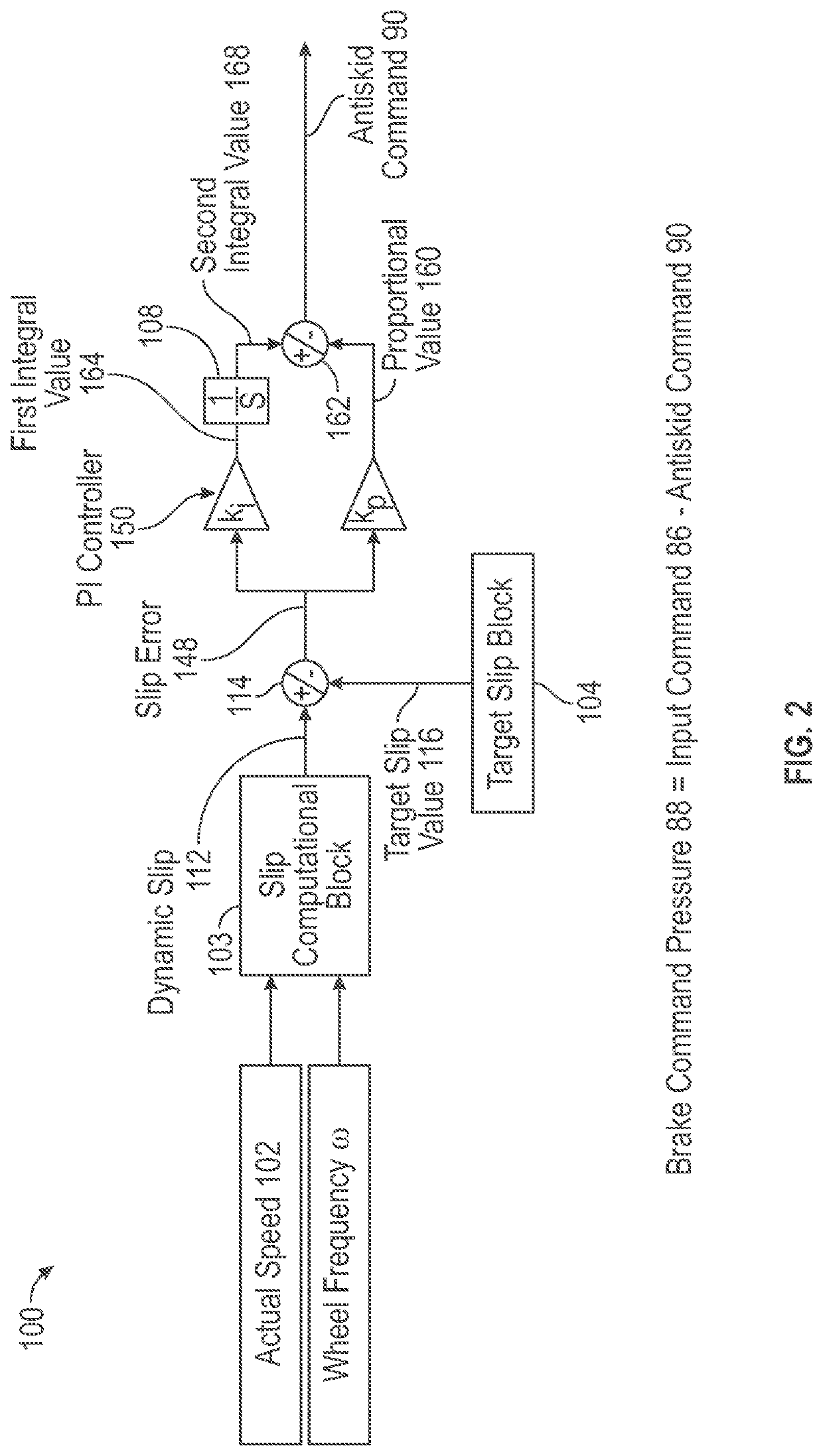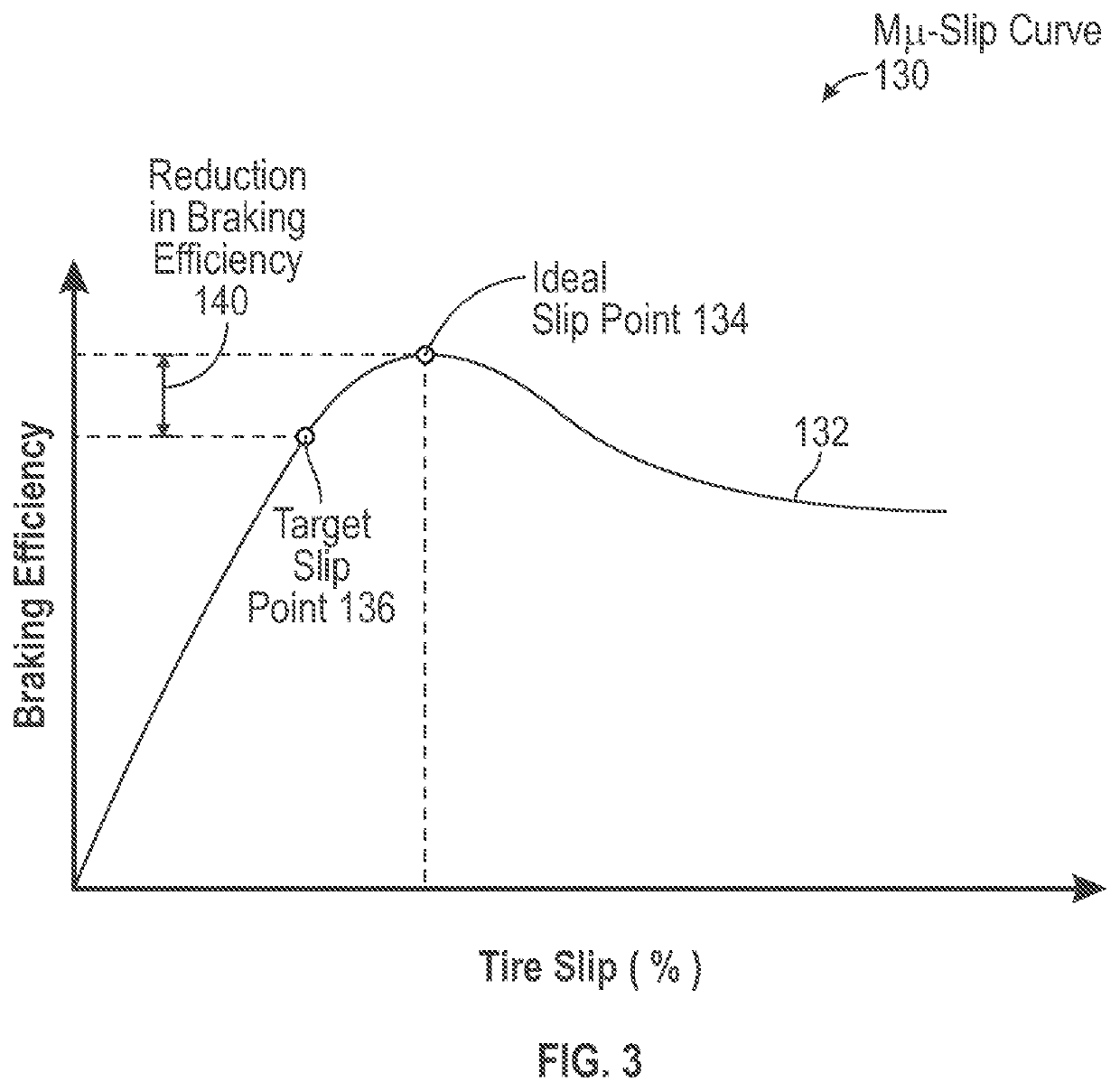Brake system providing limited antiskid control during a backup mode of operation
a brake system and backup mode technology, applied in the direction of braking systems, automatic braking sequences, aircraft braking arrangements, etc., can solve the problems of limited hydraulic brake fluid storage in the accumulator, accumulator being emptied relatively quickly, and the functions of the brake system may not be available, so as to reduce the braking efficiency of the brake system
- Summary
- Abstract
- Description
- Claims
- Application Information
AI Technical Summary
Benefits of technology
Problems solved by technology
Method used
Image
Examples
Embodiment Construction
[0021]The disclosure is directed towards a brake system for a vehicle, where the brake system includes an energy storage device. During a backup mode of operation, the energy storage device is used to supply energy to the brake system. The brake system conserves an amount of energy that is stored within the energy storage device during the backup mode of operation. Specifically, a control module of the brake system determines an antiskid command that represents a reduction in brake pressure applied to the wheels of the vehicle. The antiskid command is calculated based on an error between a dynamic slip of the wheels and a target slip value of the wheels. The target slip value is offset from an ideal slip value of the wheels, and results in a reduced stopping efficiency of the brake system. However, since the target slip results in a reduced amount of brake pressure applied to the wheels, the brake system consumes less energy from the energy storage device each time brakes are applie...
PUM
 Login to View More
Login to View More Abstract
Description
Claims
Application Information
 Login to View More
Login to View More - R&D
- Intellectual Property
- Life Sciences
- Materials
- Tech Scout
- Unparalleled Data Quality
- Higher Quality Content
- 60% Fewer Hallucinations
Browse by: Latest US Patents, China's latest patents, Technical Efficacy Thesaurus, Application Domain, Technology Topic, Popular Technical Reports.
© 2025 PatSnap. All rights reserved.Legal|Privacy policy|Modern Slavery Act Transparency Statement|Sitemap|About US| Contact US: help@patsnap.com



